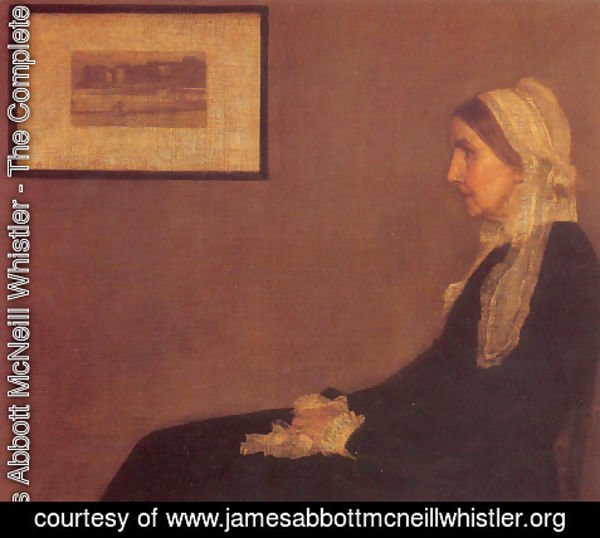Whistling Dixie (1871)
While the Italian Mona Lisa’s smile has beguiled the world, the American painted lady’s dour expression shows a woman who did not possess a non-serious bone. The Victorian painting is entitled, Arrangement in Grey and Black No. 1, though its colloquial name is Whistler’s Mother, after Anna Matilda Whistler.
Tallulah Bankhead quipped, “The less I behave like Whistler’s mother the night before, the more I look like her the morning after.” Destined to become the world’s most famous mother, Anna McNeil, from Wilmington, North Carolina, was born in 1804, a daughter of a physician and the niece of a slave owner. She became the second wife of Major George Washington Whistler, a West Point graduate; the couple suffered the loss of four children in the span of six years. Only her sons, James “Jemie” Abbott and William survived to adulthood. Her sister-in-law summed up Anna’s pious personality as “so unshakeable that sometimes I could shake her.” 
George was a brilliant engineer, and Tsar Nicholas I hired him to help construct the Moscow-St. Petersburg Railway. Recognizing James’ artistic talent, Anna enrolled him in the Imperial Academy of Fine Arts. Upon her husband’s death from cholera in 1849, a devastated Anna wore black for the rest of her life and returned with her children to America.
Anna lived with William until he left to serve as a Confederate surgeon. Not wanting to be on her own, Anna joined James in London, a trip that involved evading a Union blockade off the Atlantic Coast. Equal measure rake and Mama’s boy, to ready his house for his mother, James performed a variation of spring cleaning that entailed evicting his Irish mistress, Jo Hiffernan. A decade earlier he had portrayed her in his painting, The White Girl, due to the shade of her dress. Rather than poke out his eye with his paintbrush, Jo moved to her own residence where she raised James’ son who he had fathered with a maid. The artist’s two daughters, from another girlfriend, ended up in foster care. The devoutly Episcopalian Anna turned a blind eye to her son’s sins of profligate spending, womanizing, and child abandonment and was forever his steadfast supporter.
In 1871, after a fifteen-year-old girl failed to show up for her sitting, James decided to paint a portrait of Anna. The mother-as-model described “standing as still as a statue,” but at age 67, in ill health, she had to pose while seated. Upon completion, James exclaimed, “Oh Mother it is mastered, it is beautiful!” Rather than thanking his mother for her contribution, James had praised his own artistry. The American’s gargantuan hubris led the Irish wit, Oscar Wilde, to declare, “Whistler spelled art with a capital ‘I.’”
Anna died in 1881, and, in honor of his mother, James changed his middle name Abbott to her maiden name, McNeil. A further tribute was her posthumous fame. The Louvre acquired the painting, and Cole Porter alluded to her in his song “You’re the Top.” President Franklin Delano Roosevelt, along with his mother, visited her portrait when she was on loan to the Museum of Modern Art. Taken with her likeness, FDR authorized Anna’s likeness for a Mother’s Day stamp. A civic group in Pennsylvania erected a monumental statue of her; on its base are words from Coleridge, “A mother is the holiest thing alive.” The French President Valéry Giscard d’Estaing borrowed the canvass so he could hang it from his office so visiting American President Jimmy Carter could enjoy a private viewing of his favorite work of art.
Had Anna been told that she would one day become a universal icon, the no nonsense Southerner would have pursed her lips and replied that the bearer of the ludicrous prediction was just whistling Dixie.


